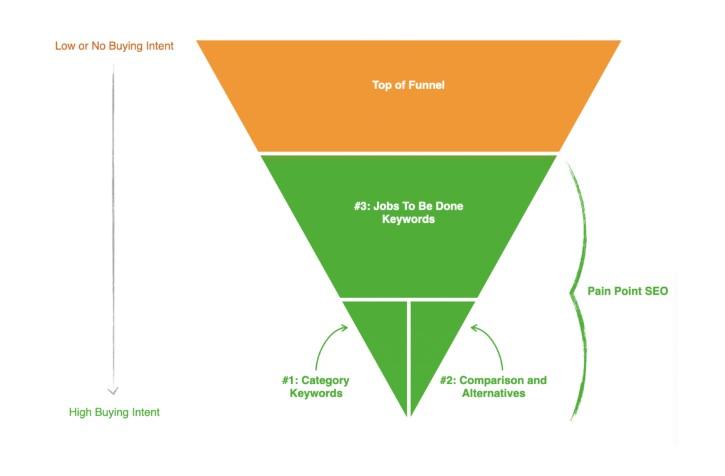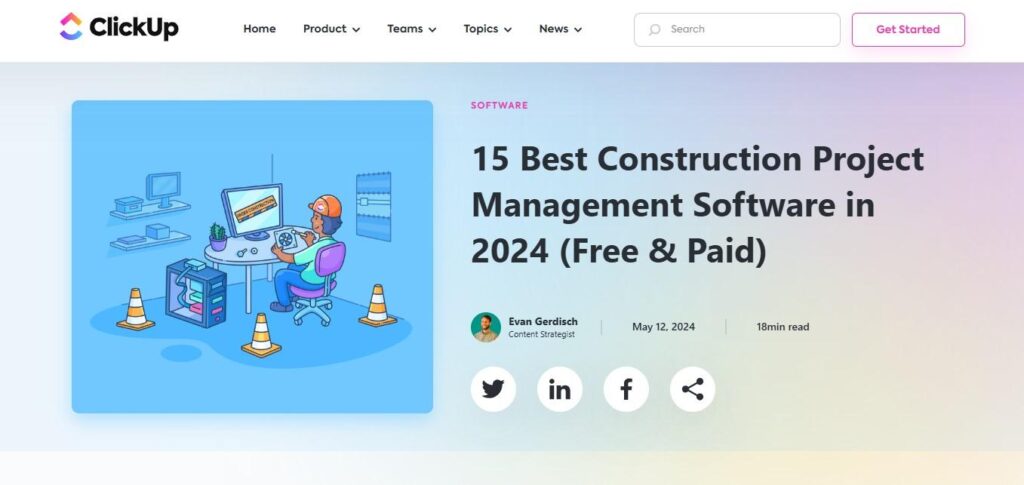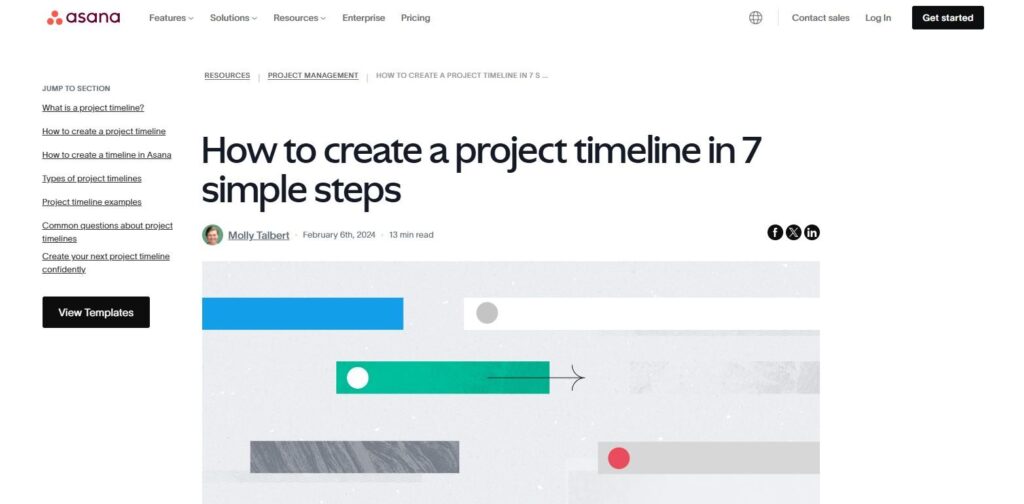Driving traffic is great.
But if it doesn’t turn into sales, what’s the point?
Your clients want real results that boost their business.
Pain point SEO is a strategy that prioritizes conversions.
Instead of chasing high search volumes, you focus on creating problem-solving content. The type of content that helps people achieve a specific goal or make a purchasing decision.
This can be a super effective way to boost conversion rates.
In this guide, we’ll unpack pain point SEO and teach you how to use this strategy to deliver better results for your clients.
We’ll cover:
- What pain point SEO is
- The difference between traditional SEO and pain point SEO
- How pain point SEO can help you drive sales
- How to do pain point SEO
- Real-life examples of pain point SEO in action
What Is Pain Point SEO?
Pain point SEO is a marketing strategy that focuses on high-intent keywords. The goal is to attract more conversion-ready traffic by creating content that addresses the specific pain points of your audience.
The concept of pain point SEO was introduced by Benji Hyam and Devesh Khanal at Grow and Convert.
They noticed that the content that generated the most conversions wasn’t the pages that attracted the most traffic. It was the pages that targeted more specific long tail keywords.
The phrases people type into Google when searching for a solution to a defined problem.
If you’re already familiar with the sales funnel concept, this isn’t exactly a groundbreaking idea.
But it can be a helpful way to maximize SEO ROI for your clients.
What’s the Difference Between Traditional SEO and Pain Point SEO?
Traditional SEO tends to focus on high-volume keywords. These phrases generate the most searches and can drive the most traffic.
But these broader terms often have low buying intent. They are at the top of the sales funnel.
Ranking for these keywords can be great for brand awareness. But that might not translate into direct sales.
A pain point SEO strategy is more focused on high buying intent keywords. These terms are in the middle or bottom of the sales funnel.
That means they usually have a relatively low search volume. But the people searching for these keywords are much more likely to convert.
How Pain Point SEO Can Help You Attract Customers
People searching for high-intent keywords are already aware of their problem. They are actively looking for solutions.
They know what they need and are just a few steps away from making a decision.
By creating content that addresses their specific pain points, you can attract super-targeted traffic.
Want to get SEO results faster?
Target longer-tail variations of your keyword
– Less competitive
– Easier to rank
– Higher purchase intent— Kai Cromwell | Shopify SEO (@KaiCromwell) March 27, 2023
Pain point SEO is all about niche, long tail keywords that people search for when they’re close to buying something.
For example, someone might search for the keyword’ best software for small business accounting.’ This person is in the process of making a purchasing decision.
They are way down the sales funnel. They need an accounting solution now.

If you create valuable content that helps them make this decision, you can attract them to your site and get them to consider your product or service.
Pain point SEO focuses on these types of keywords. It can help you boost sales by attracting people ready to take action.
How to Do Pain Point SEO
Here’s how you can start using pain point SEO to drive more conversions for your clients:
Identify Pain Points
First, you need to figure out what issues your target audience is facing. This involves a bit of research.
You can start with the benefits of your client’s product or service and work backward. This helps you keep your keywords highly relevant.
Primary research can also be useful.
You can use surveys to ask customers directly, check customer feedback and reviews, and see what people are talking about on social media.
The goal is to get a clear understanding of the pain points your audience faces.
Keyword Research
Next, it’s time to find the pain point keywords your audience uses to search for solutions.
You want to focus on highly relevant keywords with strong buying intent. Search volume is still important, but it’s not the primary focus of your keyword research.
For example, ‘weight loss’ is a general head term that attracts people at every stage of the buyer’s journey.

But it doesn’t address a specific pain point.
Instead, you would look for more high-intent keywords.
Let’s say you’re working with a client that sells vitamins. One of their buyer personas is people looking to improve their physical fitness and lose weight.
A good pain point keyword to target would be ‘what are the best vitamins for weight loss.’

This keyword has a high purchase intent.
It’s a term people search for when they are considering their options before making a purchase.
Create Content
Once you’ve built a list of keywords, the next step is to create your content.
Understanding the search intent is vital here.
You need to understand what motivates someone to type a query into Google.
Analyzing the search engine results pages (SERPs) for your target keywords can help you determine the type of content you should create.
Look at the content that currently ranks well. Is it how-to guides, product pages, listicles, or something else?
This analysis helps you understand what Google believes matches the search intent for your target keyword. It helps you create content that fits what searchers are looking for.
When you’ve nailed down the search intent, create content directly addressing the pain point.
Your content should provide a clear solution to the problem your audience is facing.
The key is to offer valuable information that helps your audience and positions your product or service as the best solution.
Optimize and Promote
The final step is to optimize your content and promote it through your marketing channels to maximize its reach.
That includes promoting your content on social, email, and on other platforms where your audience hangs out.
And it also includes link building.
You need to build links to your content to compete in the SERPs and maximize your ranking potential.
1. Pick bottom of funnel keywords very related to the client’s product
2. Deeply analyze the SERP to know search intent
3. Write detailed article selling client’s product and adding something unique to the conversation
4. On page optimization with @clearscope
5. Link building— Devesh Khanal (@deveshkhanal) March 21, 2023
You can use blogger outreach, niche edits, and other link building tactics to attract backlinks from high-authority, relevant websites.
Real-Life Examples of Pain Point SEO
The best way to understand pain point SEO is through practical examples. Here are three real-life examples of brands using pain point SEO:
Category Posts: ClickUp
These posts help people compare their options by listing the best products or services in a category.
ClickUp regularly uses this type of content. It’s also a tactic you’ll see a lot of on affiliate marketing websites.
In the example below, the blog post targets the specific keyword, ‘construction project management software.’ This helps to attract a more targeted audience.

The post lists the top 15 software options with detailed descriptions, features, and benefits.
It directly addresses the target audience’s pain points and ranks ClickUp as the best solution.
This blog post is a great example of how pain point SEO works.
It focuses on a high-intent keyword and addresses the unique needs of the construction industry. A significant percentage of people who land on this page from search engines are likely to take action and convert.
Comparison Posts: Infinity
Comparison posts are super useful for customers who are in the consideration stage. They’ve identified their problem and are now looking at different solutions.
Infinity’s blog post, 13 ClickUp Alternatives Worth Checking Out in 2024, is an excellent example.
People searching for ‘ClickUp alternatives’ already know about one potential project management solution. But they are still exploring their options.

The content lists 13 alternatives to ClickUp, each with key features and pricing. This helps potential customers evaluate which tool is the best fit for their needs.
You can use comparison posts to guide potential customers through their decision-making process.
By offering detailed comparisons and addressing key pain points, Infinity positions their product as a superior choice while providing value to their audience.
This approach helps attract more qualified leads and increases the chances of conversions.
SEO is a blank canvas.
What to create content about?
What pages to rank?
Do this: Fill out the bottom of your funnel before you get clever.
Focus on Revenue Focused Content (RFC)
X vs X
Best X for X
X alternatives
X discount code
X review— Joe Davies (@fatjoedavies) July 13, 2024
Jobs-to-Be-Done (JTBD) Content: Asana
JTBD content focuses on the specific tasks your product or service can help with.
It targets people looking for solutions to specific problems or tasks they need to accomplish.
This example from Asana is a great example.
People searching for ‘how to create a project timeline’ are looking for guidance on completing a specific task.

The content provides clear, step-by-step instructions.
First, it outlines what you need to do to create a project timeline. Then, it shows you how much easier the process is using a tool like Asana.
It helps users accomplish the task while demonstrating the value of the product.
Build Out the Bottom of Your Funnel with Pain Point SEO
Pain point SEO doesn’t reinvent the wheel. It’s not a revolutionary approach to SEO.
However, it is a helpful way to think about the types of keywords you target and the content you create.
Instead of focusing primarily on driving traffic, it helps you narrow in on the people most likely to convert.
And that’s what your clients care about.
Become a Pro at SEO
Join 65,000 others and learn the secrets to SEO success with our weekly blog posts.
